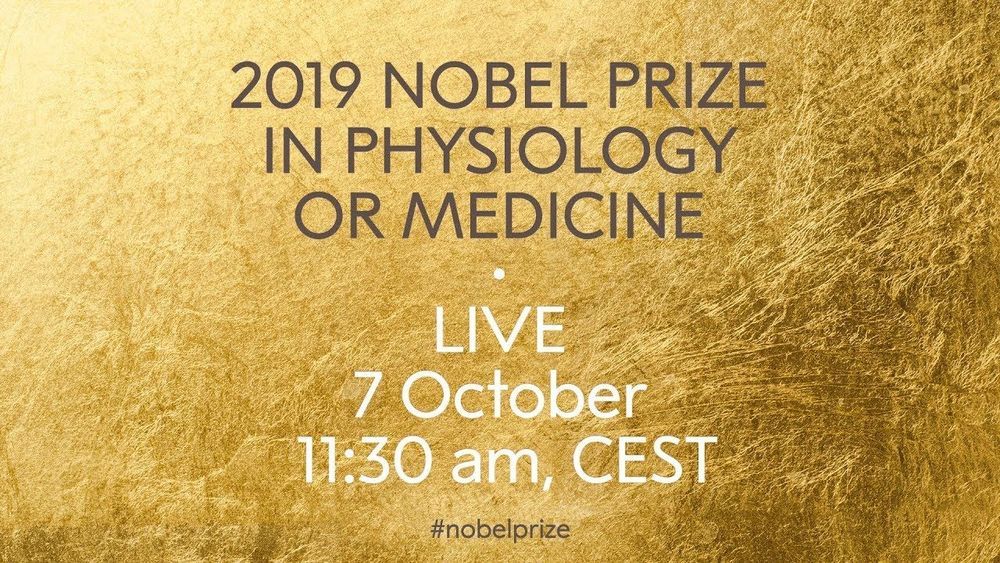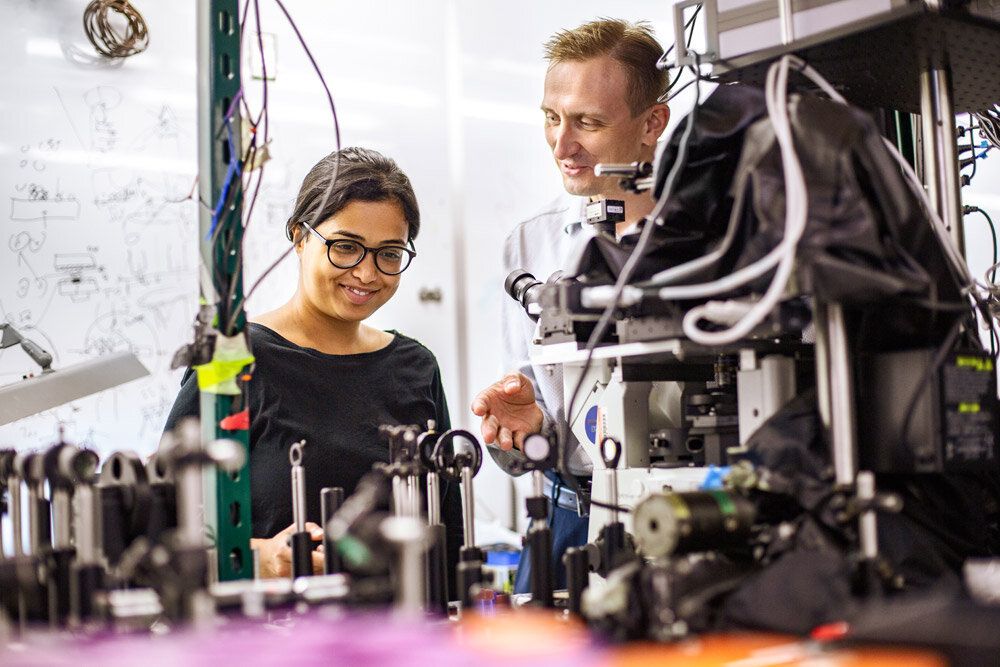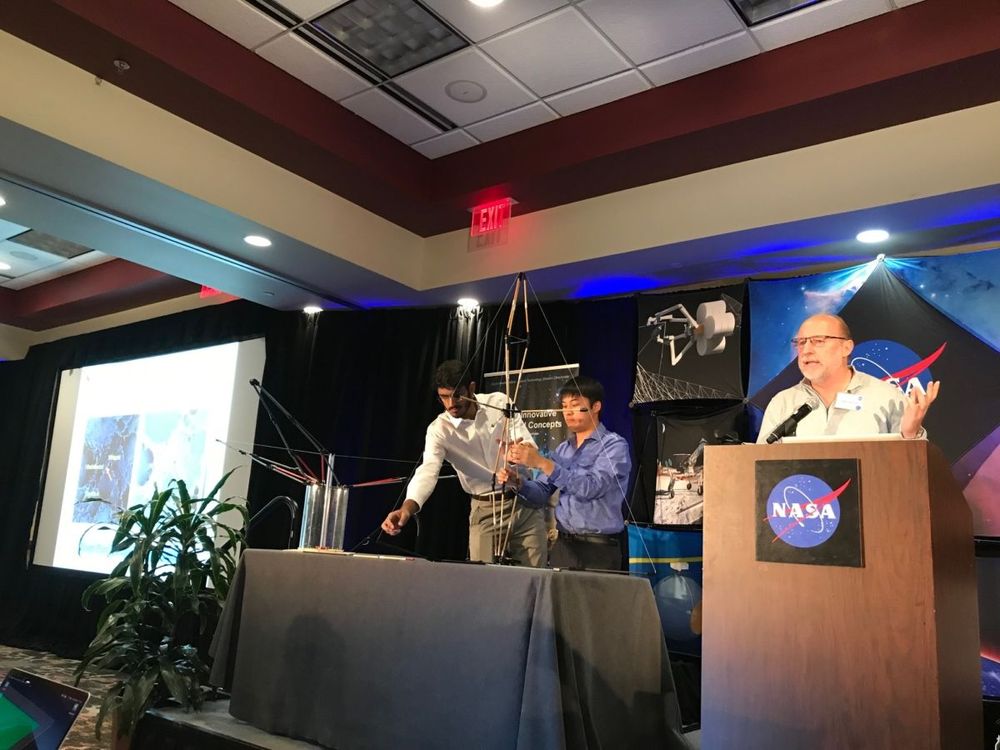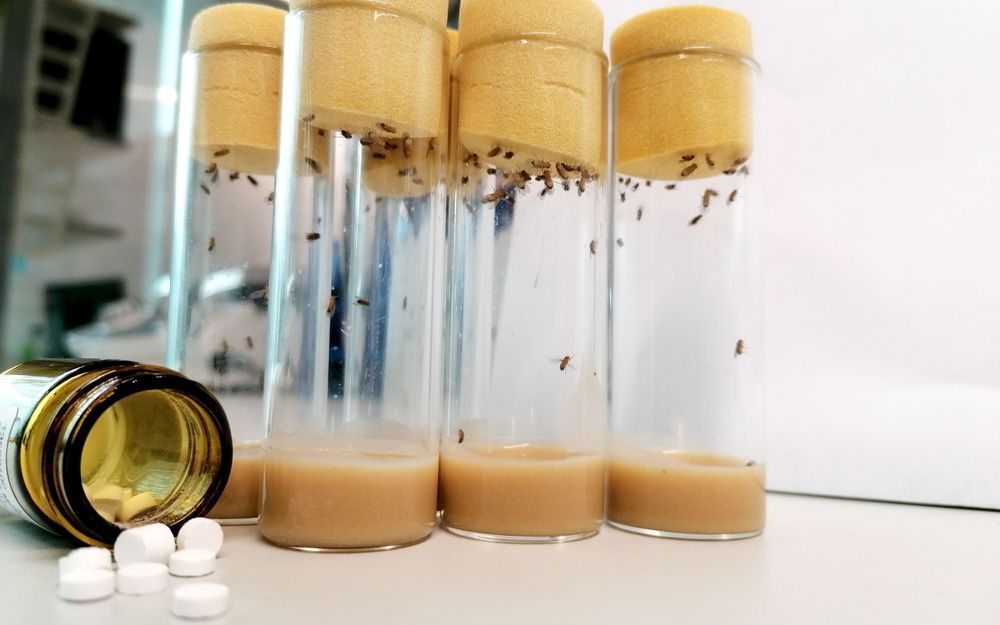Page 8287
Oct 7, 2019
Robot revolution: Humanity 10 years away from major breakthrough, predicts expert
Posted by Genevieve Klien in categories: biotech/medical, robotics/AI
ROBOTS will be assisting surgeons to carry out complex medical procedures within ten years, offering just one example of how the rapidly evolving scientific field will change the world as the 21st century progresses, a robotic engineer has predicted.
Oct 7, 2019
Physicists shine light on properties of potential solar cell material
Posted by Genevieve Klien in categories: quantum physics, solar power, sustainability
Research led by University of Texas at Dallas physicists has altered the understanding of the fundamental properties of perovskite crystals, a class of materials with great potential as solar cells and light emitters.
Published in July in Nature Communications, the study presents evidence that questions existing models of the behavior of perovskites on the quantum level.
“Our enhanced understanding of the physics of perovskites will help determine how they are best used,” said Dr. Anton Malko, associate professor of physics in the School of Natural Sciences and Mathematics and a corresponding author of the paper.
Oct 7, 2019
Rare ‘Lazarus superconductivity’ observed in promising, rediscovered material
Posted by Shane Hinshaw in categories: computing, quantum physics
Researchers from the University of Maryland, the National Institute of Standards and Technology (NIST), the National High Magnetic Field Laboratory (NHMFL) and the University of Oxford have observed a rare phenomenon called re-entrant superconductivity in the material uranium ditelluride. The discovery furthers the case for uranium ditelluride as a promising material for use in quantum computers.
Nicknamed “Lazarus superconductivity” after the biblical character who rose from the dead, the phenomenon occurs when a superconducting state arises, breaks down, then re-emerges in a material due to a change in a specific parameter—in this case, the application of a very strong magnetic field. The researchers published their results on October 7, 2019, in the journal Nature Physics.
Once dismissed by physicists for its apparent lack of interesting physical properties, uranium ditelluride is having its own Lazarus moment. The current study is the second in as many months (both published by members of the same research team) to demonstrate unusual and surprising superconductivity states in the material.
Oct 7, 2019
Lunar-polar Propellant Mining Outpost Envisioned
Posted by Klaus Baldauf in categories: futurism, space
HUNTSVILLE, Alabama – Moon propellant mining outposts can grow into lunar cities. A futuristic architecture promises to greatly reduce the cost of human exploration and industrialization of Earth’s celestial next-door-neighbor.
Oct 7, 2019
Podcast #34: The Futures School, with Frank Spencer
Posted by Mark Sackler in categories: futurism, neuroscience

“The future belongs to those who prepare for it today.”–Malcolm X “Be open-minded, but not so open-minded that your brains fall out.”–Groucho Marx In our …
Oct 7, 2019
Trio Wins Nobel Prize In Physiology Or Medicine For Work On Cell Metabolism
Posted by Genevieve Klien in category: biotech/medical

William G. Kaelin, Jr., of the Dana-Farber Cancer Institute and Harvard University, Sir Peter J. Ratcliffe, of Oxford University and the Francis Crick Institute, and Gregg L. Semenza, of Johns Hopkins University were jointly awarded the prize.
Oct 7, 2019
Three-drug combo almost doubles fruit fly lifespan
Posted by Genevieve Klien in categories: biotech/medical, life extension
The complex interplay of various processes and mechanisms that contribute to aging means it’s unlikely we’ll discover a single “magic bullet” to prevent age-related diseases. But new research led by University College London and the Max Planck Institute for Biology and Ageing is potentially as close as anything we’ve seen. The scientists have been able to extend the lifespan of fruit flies by 48 percent using a triple drug combination made up of drugs already used in people.
“As life expectancies increase, we are also seeing an increase of age-related diseases so there is an urgent need to find ways to improve health in old age,” says study co-lead author, Dr Jorge Castillo-Quan. “Here, by studying fruit flies which age much more rapidly than people, we have found that a combination drug treatment targeting different cellular processes may be an effective way to slow down the aging process.”
The three drugs making up the combo include lithium, which is used as a mood stabilizer, trametinib, a cancer drug that inhibits MEK1 and MEK2 enzymes, and rapamycin, an immune system regulator produced by bacteria that was first found in a soil sample from Easter Island and has been found to improve learning and memory in mice.
Oct 6, 2019
On Supersymmetry | John Ellis, Catherine Heymans, Ben Allanach, Subir Sakar, Cumrun Vafa
Posted by Quinn Sena in categories: cosmology, particle physics, quantum physics

The standard model of physics remains incomplete. Could supersymmetry fill the gaps? From whether supersymmetric particles could fix the mass of the Higgs Boson to what this would mean for string theory, the world’s leading thinkers explain all.
John Ellis is a British theoretical physicist who is currently Clerk Maxwell Professor of Theoretical Physics at King’s College London. He was Division Leader for the CERN theory division, a founding member of the LEPC and of the LHCC at CERN and currently chair of the committee to investigate physics opportunities for future proton accelerators.
Oct 6, 2019
A 5,000-year-old city ten times the size of Jericho and an even older temple discovered in northern Israel
Posted by Genevieve Klien in category: futurism
An ancient city “ten times the size of Jericho” has been unearthed in northern Israel. The site, En Esur, is still expected to be paved over by a new road.















